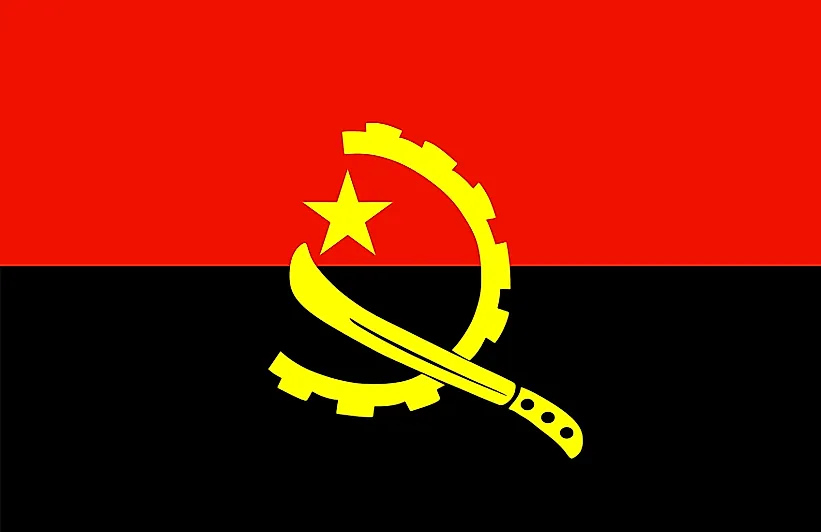
Angola
| Continent | Africa |
| Capital | Luanda |
| Population | 25,789,024 |
| GDP | $189.00 Billion |
| GDP per Capita | $6,800 |
| Dialing Code | +244 |
| ISO Code (2-letter) | AO |
| ISO Code (3-letter) | AGO |
Angola Landscapes






About Angola
Welcome to Angola, a country of remarkable resilience and untapped potential on Africa’s western coast. With its vast territory of 1,246,700 square kilometers, Angola combines pristine Atlantic beaches, tropical Atlantic forests, and expansive savannas. Home to approximately 33 million people, this former Portuguese colony has emerged from decades of civil war to become one of Africa’s fastest-growing economies, rich in natural resources and cultural diversity.
Geographic Features and Natural Beauty
Angola’s geography is a stunning mosaic of diverse landscapes. The country’s 1,600-kilometer Atlantic coastline features beautiful beaches, mangrove swamps, and the unique Namib Desert in the south. The interior rises from coastal lowlands to a vast plateau, where most of the population lives, enjoying a milder climate than the tropical coast.
The country is blessed with numerous rivers, including the mighty Cuanza and Cunene, which provide essential water resources and hydroelectric power. The Kissama National Park, Angola’s oldest national park, showcases the country’s diverse wildlife, including rare giant sable antelopes found nowhere else in the world.
In the east, the landscape transitions into tropical forests, while the south features more arid regions. The Tundavala Gap in Huíla Province offers breathtaking views of the surrounding landscape, with cliffs dropping dramatically into the depths below.
Cultural Heritage and Traditions
Angolan culture is a vibrant fusion of indigenous African traditions and Portuguese influences. The country is home to various ethnic groups, each contributing to its rich cultural tapestry. The Ovimbundu, Ambundu, and Bakongo peoples, among others, maintain their distinct traditions while participating in modern Angolan society.
Music plays a central role in Angolan culture, with styles like semba and kizomba gaining international recognition. The country’s traditional dances, particularly the semba dance, have influenced popular dance forms worldwide. Angolan cuisine reflects both African and Portuguese heritage, featuring dishes like funge (cassava porridge) and calulu (fish stew).
Traditional crafts, including wood carving, pottery, and basket weaving, continue to be practiced, preserving ancient skills and artistic expressions. The country’s oral traditions, passed down through generations, keep alive the stories and wisdom of Angola’s diverse peoples.
Historical Journey
Angola’s history is a testament to human resilience and determination. From ancient kingdoms like the Kongo and Ndongo to Portuguese colonization beginning in the 15th century, the country’s past is rich and complex. The struggle for independence, achieved in 1975, was followed by a prolonged civil war that ended in 2002.
Archaeological sites throughout the country reveal evidence of human habitation dating back thousands of years. The ruins of M’banza-Kongo, the former capital of the Kingdom of Kongo and now a UNESCO World Heritage site, stand as a reminder of pre-colonial African civilization.
Modern Economic Landscape
Today’s Angola is experiencing significant economic transformation. The country is Africa’s second-largest oil producer, and its economy is diversifying beyond petroleum into sectors such as agriculture, manufacturing, and services. Diamond mining also plays a crucial role in the economy, with Angola being one of the world’s top diamond producers.
The capital city, Luanda, has become a modern metropolis and one of Africa’s most expensive cities, reflecting the country’s rapid development. Major infrastructure projects, including new ports, railways, and highways, are helping to connect different regions and boost economic growth.
International Relations and Global Position
Angola has emerged as a significant player in African affairs, particularly in the Southern African Development Community (SADC) region. The country maintains strong diplomatic and economic ties with major global powers, including China, Russia, and Western nations, while advocating for African interests in international forums.
Did You Know?
• Angola is home to the Kissama National Park, where a remarkable post-war wildlife restoration project has reintroduced elephants and other species?
• The country has one of the world’s longest-running radio stations, Radio Nacional de Angola, broadcasting since 1937?
• Angola’s giant sable antelope, found nowhere else in the world, is so beloved it appears on the national airline’s logo and various currency notes?
• The Kalandula Falls, at 105 meters high and 400 meters wide, are one of Africa’s largest waterfalls?
Conclusion
Angola represents a nation of extraordinary potential and resilience, where a rich cultural heritage meets modern ambitions for development and progress. From its stunning natural landscapes to its vibrant urban centers, from its traditional villages to its modern industries, Angola continues to evolve while maintaining its unique identity. As the country moves forward, it stands as a testament to the power of peace, determination, and the human spirit in overcoming challenges to build a promising future.